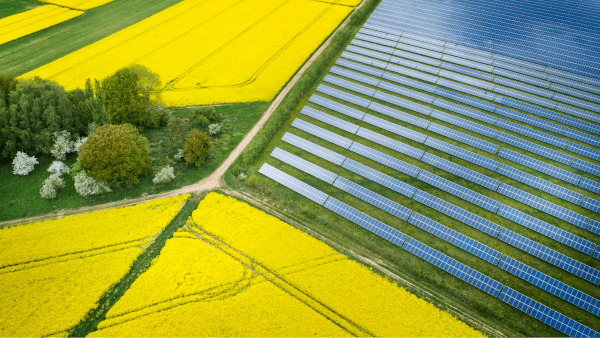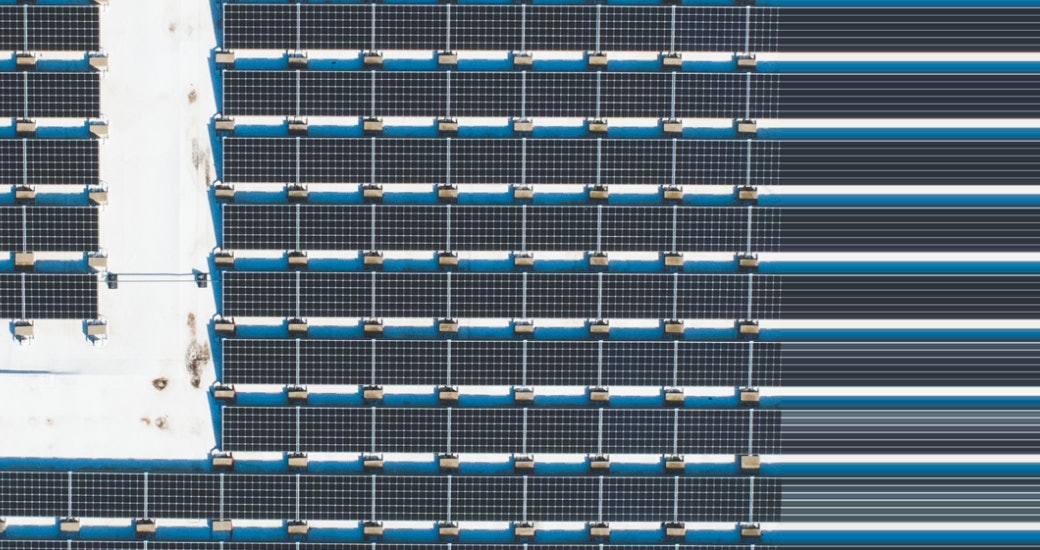Community solar statistics: measuring progress in the US

In 2023, we’re seeing more Americans rally behind sustainability efforts: over two-thirds now support the development of alternative, clean energy sources. And as this popular demand for clean energy continues to grow, a new model for solar development is being rapidly adopted nationwide: community solar.
Community solar is a way to support solar energy and save on your power bill without installing your own solar panels. Instead, you join a local solar project — which is often built on unused land, but can also be a parking lot canopy or on community buildings. As your community solar project generates electricity, you earn annual savings on your electricity costs.
Still, this emerging industry is a bit of an unknown for many consumers. So we’ve gathered the latest US community solar statistics to paint a clear picture of what the landscape looks like today and where it’s heading.
We need accessible alternatives to rooftop solar
Although the price has dropped significantly in recent years, rooftop solar panel installations aren’t attainable for a large portion of Americans. Many can’t afford or can’t get financing (due to their credit score) for a solar system that costs $20,650 on average.
Even if you can afford it, installation requirements often exclude:
- people who rent their homes.
- people who live in an attached dwelling, such as a duplex or condo, regardless of ownership status.
- people whose roof conditions don’t meet the requirements for installation due to its slope, the direction it faces, the amount of available space, and so on.
Luckily, there is a whole industry developing around community solar, which opens the door to many consumers who wouldn’t otherwise have access. By signing up for community solar, consumers can bypass the need for costly panel installation while also supporting the decarbonization of the grid.
Community solar is gaining ground in the US
Who and what is driving that progress?
In January 2023, Canary Media reported on an exciting goal from our friends at the Coalition for Community Solar Access: establishing 30 gigawatts of community solar by 2030 — nearly six times the 5.3 gigawatts installed at the beginning of the year. Their piece explains how the momentum for the landscape continues to grow…
- State policies play a big role: “As of now, 22 states plus Washington, DC have created community-solar markets. Six more states will be considering community solar legislation this year, according to the CCSA: Michigan, Ohio, Pennsylvania, Washington, West Virginia and Wisconsin.”
- At the national level: the landmark Inflation Reduction Act contains long-term incentives that will also benefit the growth of community solar. According to Canary: "The climate law provides investment and production tax credits, as well as a bonus tax credit for serving low- to moderate-income customers, through 2032 that apply to community-solar projects. Those tax credits also cover grid-interconnection costs, a significant part of overall community-solar costs that previously weren’t eligible.”
These community solar statistics highlight recent progress
These statistics from the Solar Energy Industries Association (an organization promoting the growth of reliable, low-cost solar power) show how much progress we’ve made, both in the solar industry in general and in community solar.
- “The US solar industry installed 6.1 gigawatts-direct current (GWdc) of capacity in the first quarter of 2023, a 47% increase from Q1 2022.”
- “Overall, photovoltaic solar (PV) accounted for 54% of all new electricity-generating capacity additions in the first quarter of 2023.”
- The US solar industry employs 263,000 workers, and that workforce is growing.
- Through Q1 2023, 5.8 gigawatts of community solar have been installed in the US.
- And over the next five years, the US community solar market is slated to add more than 6 gigawatts of total capacity.
We’re also seeing the economic benefits of community solar coming into the spotlight, further establishing community solar as good for the environment and the economy. Here are a couple of highlights from our friends at the Coalition for Community Solar Access:
- Ohio University found that a community solar pilot project “could yield more than $3.49 billion in gross state product, $400 million in local tax revenue.”
- A proposed community solar plan in Arizona “could contribute approximately $4.8 billion in state gross domestic product (GDP), and more than 50,000 job years of employment over 35 years.”
Community solar has a lot of room to grow
Despite this progress, the implementation of renewable energy across the US is still a relatively new space, especially when it comes to community solar.
- In 2022, only 9% of net summer capacity and 4.7% of annual generation could be attributed to solar. (Meaning community solar is an even smaller portion of that generated energy.)
- While the solar industry as a whole had a record first quarter, there was a 13% drop in community solar installations in Q1 2023, compared with Q1 of last year, largely due to interconnection challenges.
- We also see uneven implementation across the US. At Arcadia, we manage community solar in 14 states, all with well-designed policies. While you’ll find some lists showing community solar in more states, some of those policies are still not designed for customers to see a financial benefit. As the market continues to rapidly grow, our team is actively working with policymakers to build programs that work for subscribers and project owners.
In addition to continuing to work on policies that will encourage the development of community solar across the US, another area of improvement is simply around awareness. Many people haven’t heard about community solar, and at first glance, it can seem too good to be true. It’s important that we continue to educate the market and earn consumer trust.
How you can benefit from community solar
We have a long way to go to reach a zero-carbon-emissions future, but as you can see from these community solar statistics, this industry has the potential to make a massive impact. Despite growing pains in this evolving industry, experts say the solar market as a whole is set to triple in size by 2028.
Your participation in a community solar program can have a lasting impact by reducing your own expenses, cleaning up the grid, boosting the local economy, and creating new jobs. Sign up with community solar through Arcadia to connect with a local solar project and receive guaranteed annual savings.
Excited about community solar? Find out if there’s a program in your area.
Already a community solar customer? Even better! Pass this article along to friends and family who might be interested, and invite them to use Arcadia with your unique referral link.


